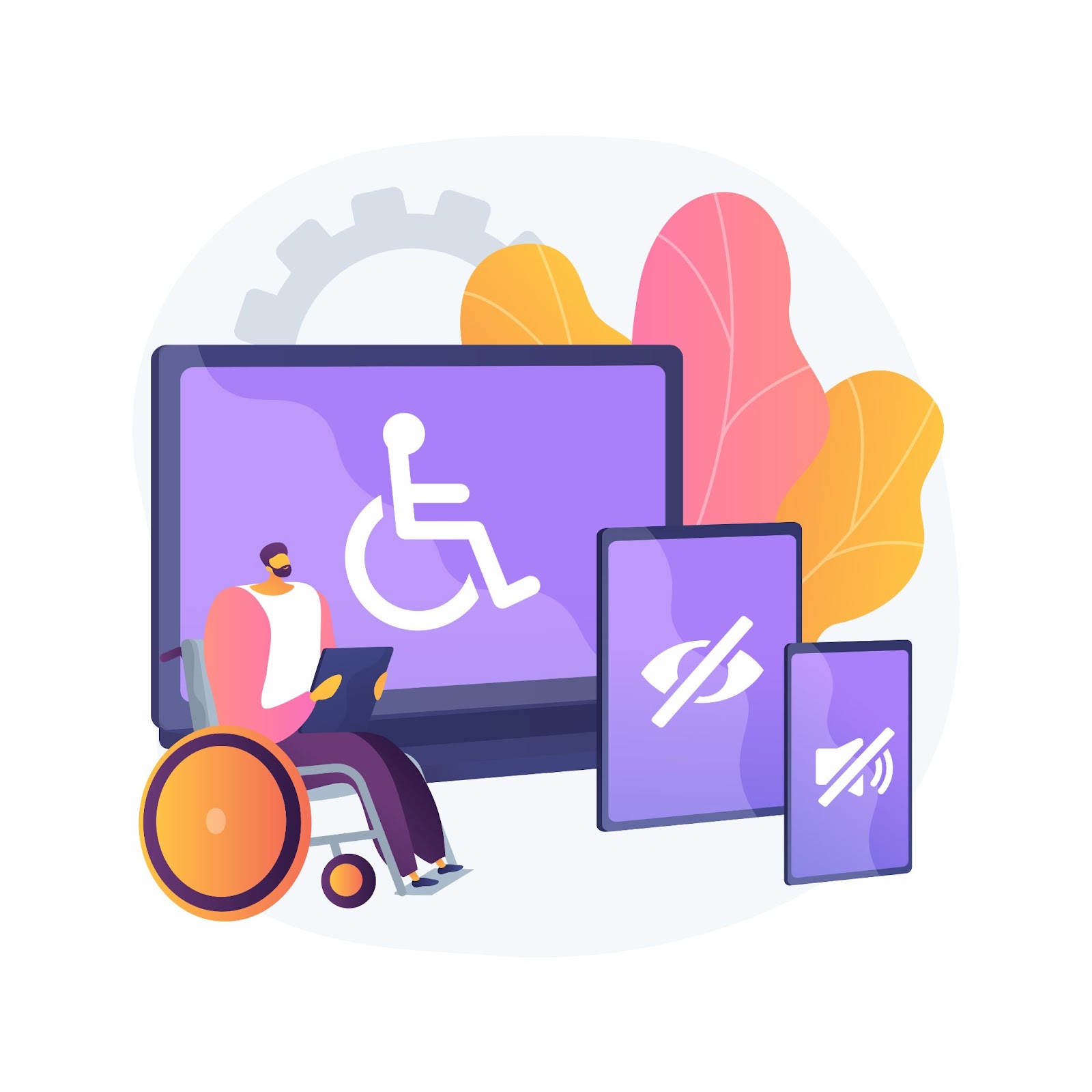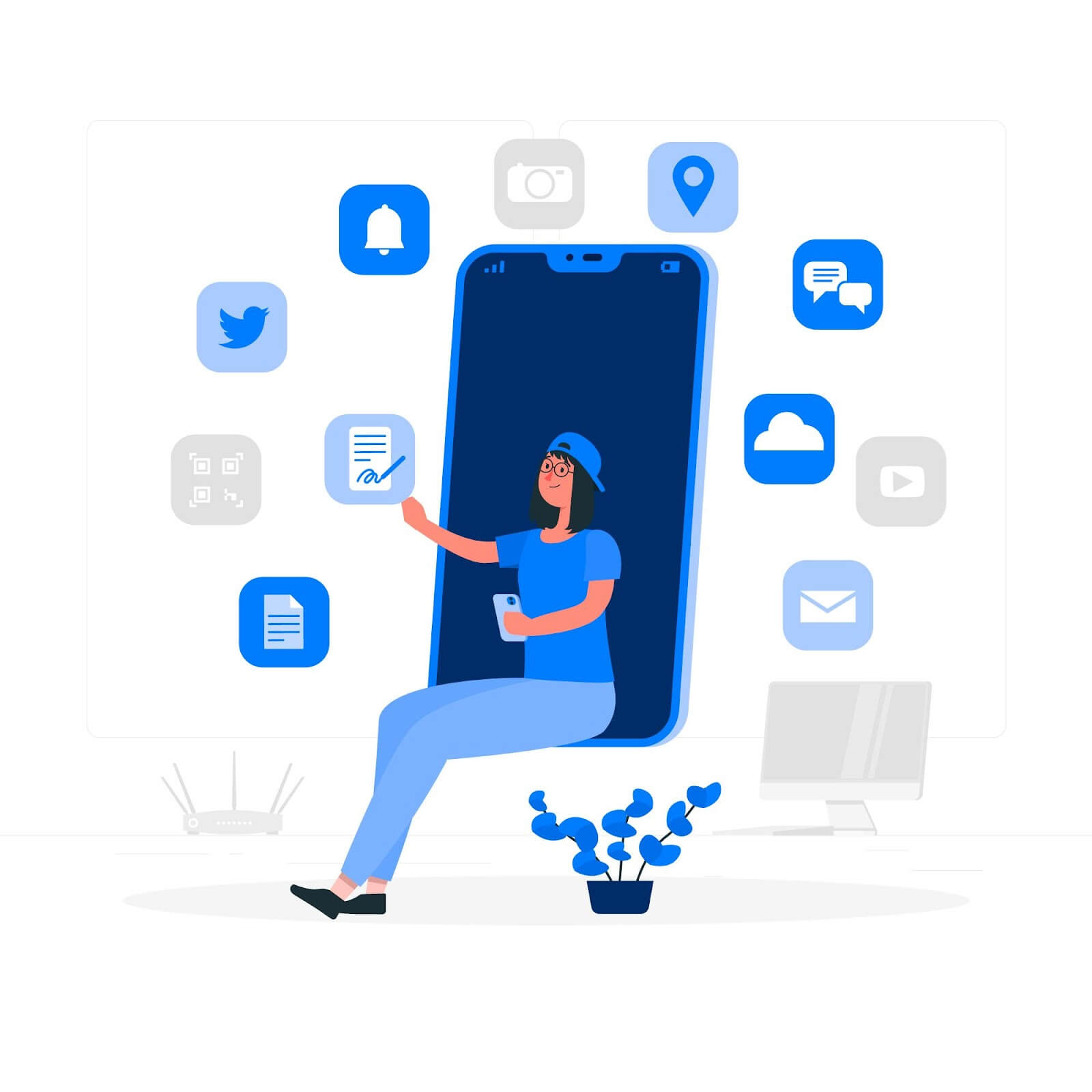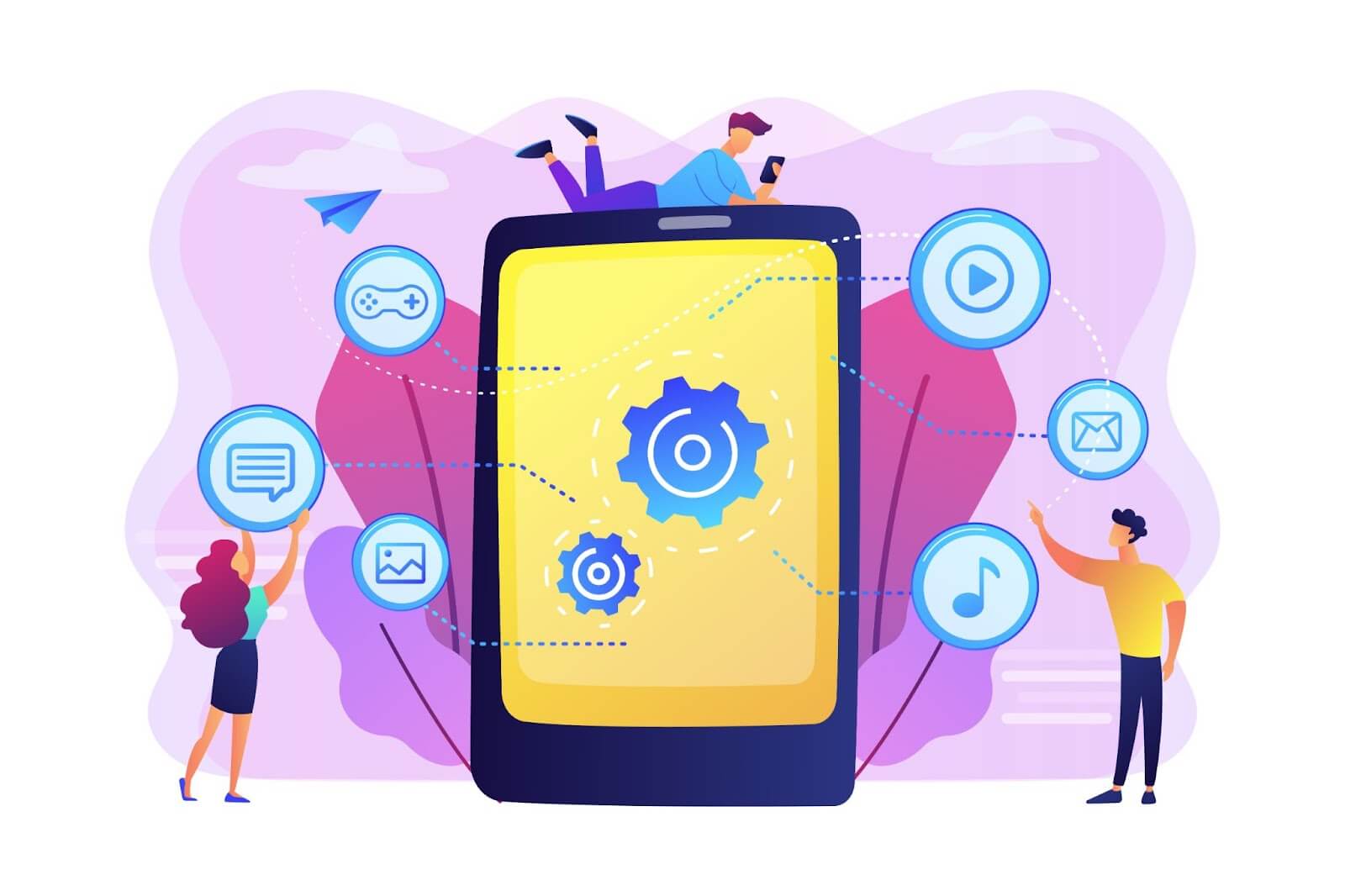How to Improve Mobile Accessibility for Your Website
Pricilla Bilavendran
Posted On: July 3, 2023
![]() 23682 Views
23682 Views
![]() 14 Min Read
14 Min Read
In today’s fast-paced digital world, having a website that is accessible to all users is crucial. This includes users with special abilities who may access the site through a mobile device. Mobile accessibility is an area that is often overlooked, but with the growing number of mobile users, your website must be accessible to everyone from anywhere.
“Digital accessibility is no longer a choice. It’s a requirement.” – Gartner Report
In this blog post, we will discuss the importance of mobile accessibility, common challenges for implementing accessibility, best practices, and ways to improve mobile accessibility for your website.
Understanding the Basics of Mobile Accessibility

What is mobile accessibility?
Mobile accessibility is the practice of designing and developing websites and applications that can be accessed by people with impairments using mobile devices. This includes people with visual, auditory, and cognitive disabilities, as well as those with motor impairments. Making your website mobile accessible provides equal access to your content for all users and helps improve the user experience for everyone which also includes elderly people who use their smartphones for various tasks.
Importance of Mobile Accessibility
Mobile accessibility is essential to create equal opportunities for users with impairments. People use mobile devices for a variety of purposes, including communication, entertainment, and information access. They have become an essential part of our daily life. However, due to a variety of restrictions, using mobile devices can be difficult for persons with impairments.
Here is where the implementation of mobile accessibility is desired. Mobile accessibility makes websites and applications more usable and accessible for those who use mobile devices to access them. Mobile accessibility benefits businesses, as improved user experience tends to result in increased sales and customer loyalty. Improved user experience leads to increased sales, customer loyalty, and compliance with accessibility regulations. These guidelines are crucial because they ensure everyone has equal access to information and technology while promoting digital equality.
Furthermore, making mobile apps and websites accessible can increase user trust and ensure a good user experience for all customers, regardless of ability and overall enhancement in mobile performance testing.
Identifying Common Accessibility Issues
- Poor color contrast: Text that lacks sufficient contrast between the backdrop and the text can be challenging to read, especially for those with conditions such as color blindness.
- Lack of Keyboard Accessibility: People who rely on the keyboard may find it difficult or impossible to connect to a website if there are no keyboard shortcuts available for navigating around it or using its features.
- Unlabeled controls and links: Users struggle to interact with website features when links and controls are not labeled correctly because they can’t tell what they are used for.
- No visible focus indicators for links/buttons: It may be challenging to determine which element has been clicked on without a focus indicator.
- Lack of screen reader support: Software called a “screen reader” can transform digital text into Braille or spoken language. It may be challenging for users of screen readers to navigate a website or application if it is not screen reader friendly.
- Poor heading structures: Navigating might be challenging for those using assistive devices like screen readers when heading levels are skipped.
- Animated or blinking text: It might be challenging for users of screen readers to comprehend the content of a website since screen readers cannot interpret the animated or blinking text.
- Image missing alternative text: Confusion can result when images lack alternative text because screen reader users cannot grasp the message the image is trying to communicate.
- Not using semantic HTML elements: Not using proper semantic HTML elements decreases the ability of assistive technologies to properly interpret the page. For example, using a div for a heading instead of an h1 tag.
- Lack of Accessible Forms and Labels: To make it easier for people who have impairments to understand how to fill out the form, forms, and labels need to be clearly labeled and visually linked to the relevant form fields.
- Lack of accessible error messages: When a glitch occurs, screen readers should give users an accessible error message that describes the situation.
- Missing ARIA roles and attributes: ARIA roles and attributes allow assist tools to provide the proper functionality for the content element. Missing or improper implementation of ARIA roles and attributes can result in assistive technology not functioning as intended.
Design Tips for Improving Mobile Accessibility

Here are some tips to make your website more accessible to users with disabilities who are accessing your site through a mobile device:
- Use a responsive design–
The ability of your website to effortlessly adjust to various screen sizes and devices makes responsive design a crucial element of mobile accessibility. To make it easier to use on smaller screens, a responsive design makes sure that your website adjusts to multiple screen sizes. Without sacrificing usability or accessibility, responsive design allows your website layout to change automatically according to the user’s device. Consequently, whether it’s a tablet or a smartphone, your website will appear great on every device. This is crucial for users who may find it difficult to access a website on a smaller device, such as those who suffer from visual or movement impairments. Ensure your website’s mobile responsiveness with Mobile-Friendly Test, a handy tool to optimize your user experience. - Keep it simple–
Simplicity matters when designing for mobile accessibility. Be careful to leave clients with only a few things on your website. Keep your design simple and uncluttered. Users with cognitive disabilities may find it simpler to grasp your material if you follow this. - Use clear and legible fonts–
Use readable fonts that are simple to read on mobile devices and have adequate backdrop contrast. To prevent people from straining their eyes while reading your material and to make it simpler for users with visual impairments to view your content, use bigger font sizes and clear, readable fonts. - Provide alternative text for images-
Alternative text is descriptive text that is read by a screen reader when an image fails to load. A website’s images are an essential component, but customers who use screen readers or have visual impairments may find them difficult. Providing alternative text for images ensures that all users can understand the content on your website. This is important for users with visual impairments who rely on screen readers to access content - Use accessible colors-
For optimum visibility, use color combinations with strong contrast and accessibility. To make the text easier to see on mobile devices, ensure the contrast ratio is high enough. - Make sure your website is navigable with one hand–
Ensure your navigation menu is easily accessible with one hand and avoid placing important elements in hard-to-reach areas. Structure the website content in a logical order from top to bottom. Keep menus, search, and other major functions at the top of the screen. Reduce the number of total clickable elements. - Provide keyboard accessibility-
When designing a mobile app, it’s essential to consider that some users may be using an actual connected physical keyboard instead of just a touchscreen. Make sure that the experience of navigating the application with only a keyboard is not hindered. - Utilize touch targets correctly-
Touch targets are more common on mobile devices than mouse and keyboard input. To make sure mobile devices can easily reach touch targets, make sure they have the right size and spacing. - Use clear language–
On mobile websites and applications, make sure the text is legible and use brief, basic sentences. Avoid using complex language or industry jargon. - Offer alternative content views-
Providing alternate content view options, such as text-to-speech capabilities might be advantageous. Using various techniques such as natural language processing, speech synthesis systems can generate synthesized speech from a given text input. - Test for accessibility-
To ensure that all of your users enjoy an accessible experience, test for accessibility across a variety of devices and platforms. - Test multiple devices-
To guarantee that all users, regardless of their device, get a quality experience, mobile apps should be tested on a variety of devices. - Provide audio/video transcripts-
Text transcripts and captions should be included in audio and video components to make the information more accessible to people with impairments. - Design inclusively-
Consider the probable requirements of users with impairments and work to ensure they can use your website and app as effectively as any other user. And educate the importance of inclusive design.
Ensuring Compatibility with Assistive Technologies
The first step in making mobile devices accessible is to ensure they are compatible with assistive technology like screen readers, voice recognition programs, and other tools. To make sure that it is simple for these technologies to navigate and comprehend, you must optimize your website’s code and design.
Strategies like semantic HTML, providing text alternatives for non-text material like photos or videos, enabling keyboard accessibility, and using appropriate header structures contribute to a more accessible experience.. To find any possible problems that need to be resolved, you may also conduct accessibility audits.
In addition to increasing mobile accessibility, you can increase user inclusivity on your website by making it compatible with assistive technology.
Designing for Mobile First
Designing for mobile first is a crucial component in enhancing mobile accessibility. This implies giving the demands of mobile users precedence over those of desktop users at the outset of your design process. This enables you to produce a design that is more simplified and effective and functions well on smaller displays and slower connections. You can even view desktop site on android in short mobile today is facilating everything.
Think about things like text size, contrast ratio, and touch targets when designing for mobile devices first. Make sure your font is large enough to read on smaller screens and that the text and background colors contrast well enough to make it readable for those who are blind. Make sure touch targets, such as links or buttons, are big enough to be readily touched on touch screens.
Optimizing Page Load Time
Mobile consumers are frequently on the go and have short attention spans. To keep people interested and stop them from leaving your site, it is crucial to optimize the page load time of your website. For consumers with sluggish internet connections or meager data limits, this is especially crucial.
Compressing pictures and videos, reducing HTTP requests, using browser caching, and code optimization are some techniques for speeding up website load times.
Testing the Website’s Accessibility
Conduct an Accessibility Audit
An accessibility audit is the first step in verifying the accessibility of your website. You may find the parts of your website that require upgrading by doing an audit. You may do an accessibility audit using a variety of web tools.
Testing Your Website
Testing your website regularly is one approach to making it more accessible. Running scheduled tests, collecting feedback, and acting according to that can help in this regard.
Use Automated Testing Tools
Automated testing tools are a great way to identify accessibility issues on your website quickly. These tools scan your website and look for common accessibility issues such as missing alt tags, improper use of headings, and color contrast issues.
Conduct Crowd Testing
Crowd testing involves real people with impairments examining your website using assistive technologies like keyboard-only navigation or screen readers. You may overlook problems with automated testing tools, but traditional testing can help you find them.
Monitor Your Website Regularly
Accessibility guidelines change regularly, so it’s essential to monitor your website regularly to ensure ongoing compliance. Regular monitoring will help you catch any new issues before they become significant problems.
You can leverage a cloud-based platform to test and manage all accessibility-related activities effectively. One such cloud-based platform is LambdaTest. It is an AI-powered test orchestration and execution platform that lets you run manual and automated tests at scale with over 3000+ real devices, browsers, and OS combinations.
Ensure Web Accessibility With Accessibility DevTools
LambdaTest offers a free-to-use accessibility testing Chrome extension called Accessibility DevTools Chrome Extension, which enables convenient accessibility testing. This extension integrates with your browser’s developer tools, allowing you to test for accessibility issues directly within your browser. It provides a range of features to help you identify and fix accessibility issues, ensuring your website is accessible to everyone.
By conducting regular accessibility audits, testing your website regularly, and using tools like LambdaTest Accessibility Testing DevTools, you can improve the accessibility of your website and ensure that it is accessible to all users. It offers features such as Full Page Scan, Partial Page Scan, Multi-Page Scan, Workflow Scan, and more. With these tools, you can efficiently test, manage, and report accessibility issues, ensuring your website is accessible to all users, including those with disabilities.
In the below section of this blog, we will look into the tools for testing mobile accessibility.
List of Tools for Testing Mobile Accessibility
For both iOS and Android different sets of tools are available.

Category of tools and resources
- Screen Readers or Narrators: Tools designed to help screen reader users access content on mobile devices. These include Apple’s VoiceOver, Google’s TalkBack, Microsoft’s Narrator, and others which are used to test the accessibility of mobile apps.
- Magnifiers & Screen enlargers: These helpful tools facilitate use for those who have difficulty reading small text.
- Simulation Tools: These enable testers to simulate various disabilities such as limited vision, color blindness, motor impairments, and hearing loss to ensure that the app caters to a variety of needs.
- Color Contrast Checkers: Online tools that can test the contrast between text and background colors, to ensure they are compliant with the WCAG standards. Helpful tools to identify low accessibility issues and make sure text and images have high contrast. Examples include Color Contrast Analyzer, WebAIM Contrast Checker, and Color Safe.
- Accessibility Checkers: Automated tools that detect accessibility issues with applications, such as lack of proper tags and labels, insufficient contrast, and non-keyboard accessibility. Examples include Accessibility Inspector and Evaluation Tools (AET) and WAVE.
- Keyboard navigation accessibility: To ensure easy navigation with the keyboard, testers need to make sure the keyboard is compatible with the app.
- Touch Target Size Checkers: Tools to ensure all interactive elements of an app are the right size for tactile input. Adee is one such plugin available to test both Apple and Android devices.
- Labeling & Naming: Checkers to ensure all interactive elements are labeled and named clearly.
- Document checkers: Document accessibility testing tool for PDF files. Inclusive Docs is an example for this category.
- Automated Accessibility Tests: Tools used to scan for accessibility issues and report them automatically. Tenon and Kobiton are a few examples of such tools helpful for the validation. Some more popular automated testing tools include Axe, Pa11y, and Google Lighthouse.
- Mobile Testing Apps: This app allows users to test the mobile app interface and its accessibility features on iOS, Android, and Windows. It also identifies potential issues that could make the app unusable.
- Standards & Guidelines: Organizations such as the W3C and the Web Content Accessibility Guidelines (WCAG) provide guidelines for creating accessible web content and interfaces.
- Google Accessibility Lab: This lab provides a variety of resources for developers to assess the accessibility of their mobile apps and websites. It also includes tutorials and other resources to help developers understand how to make their products accessible.
Conclusion

Overall, improving mobile accessibility is essential for creating a website that is inclusive, user-friendly, and meets the needs of all users. Improving mobile accessibility for your website is a legal and moral requirement. By following the best practices, by conducting an accessibility audit and using the right tools, supporting assistive technologies, you can create a website that is accessible to all, regardless of their mobile device or ability level. Remember, mobile accessibility is not just good for users with impairments, but it’s also good for your business. By making your website more accessible, you can increase your reach and improve your bottom line.
In conclusion, implementing mobile accessibility is crucial to ensure that people with impairments and elderly can access and use mobile devices. However, it comes with its own set of challenges, including inconsistent implementation of accessibility features, lack of accessibility in mobile apps, and lack of awareness and education about mobile accessibility among developers and users. By addressing these challenges through education, training, and community outreach, we can help promote digital equality and ensure everyone has equal access to information and technology.
Got Questions? Drop them on LambdaTest Community. Visit now














